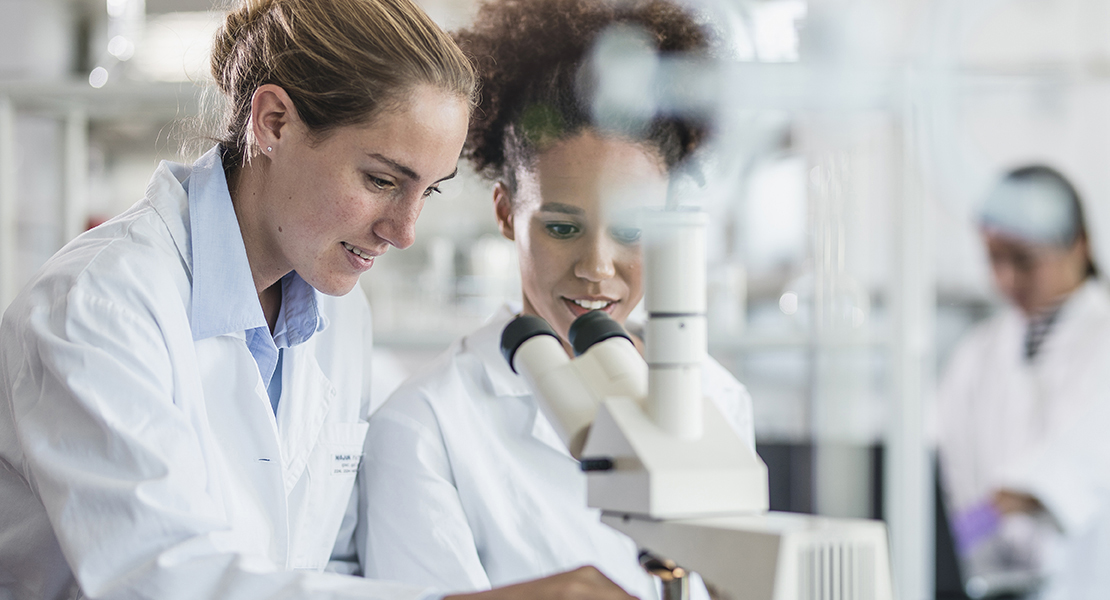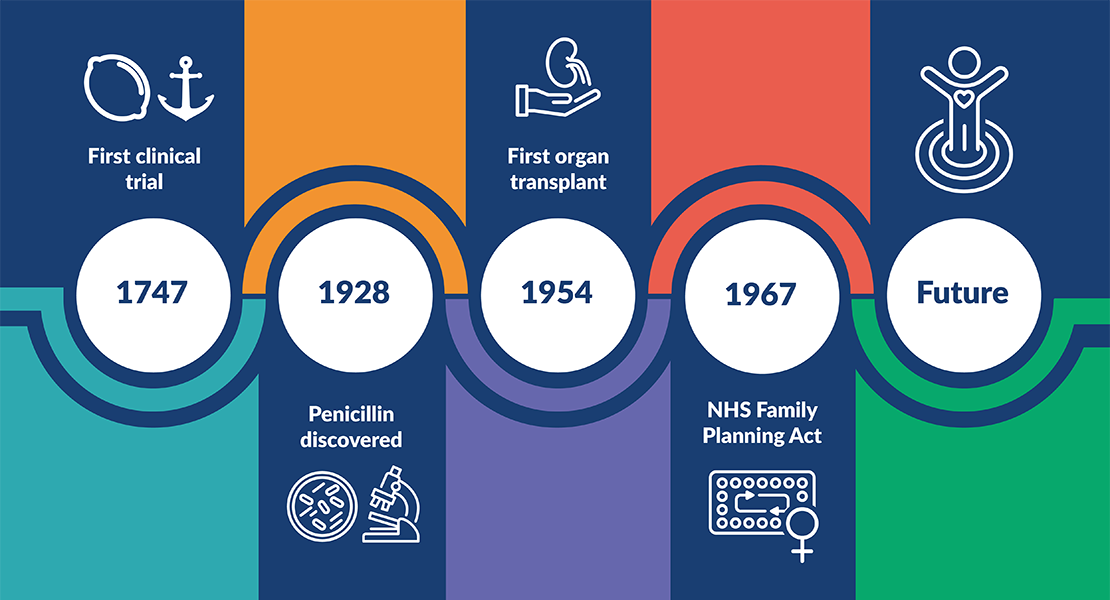Antimicrobial resistance is one of the biggest risks to global health. It threatens the way we prevent and treat many common illnesses. These include tuberculosis (TB), sexually transmitted infections, urine infections, chest infections, and sepsis.
These illnesses are all caused by either bacteria, viruses, fungi or parasites. The medicines used to treat them are called antimicrobials. Bacteria, viruses, fungi and parasites change over time. Sometimes the antimicrobials we have no longer affect them in the same way. They become ‘superbugs’ which are resistant to the drugs. It can then become harder or even impossible to treat the illnesses they cause.
Resistance to antimicrobial drugs isn’t just a problem in treating illness. Many people are given these medicines to prevent infections before operations such as caesarean sections, hip and knee replacement and heart surgery.
If more and more of our antimicrobial drugs stop working, then people will suffer from illnesses for longer and diseases will spread more easily.
Globally, antimicrobial resistance (AMR) already contributes to 700,000 deaths each year around the world.
Most at risk are people whose immune systems are not strong enough to fight infections on their own. This includes small children, older people or people with other health conditions.
Antibiotics are especially vulnerable to resistance. We use antibiotics to treat illnesses caused by bacteria. No new types of antibiotics have been developed since the 1980s. This makes those we do have even more precious.
Developing new antibiotics isn’t the only solution. There are a lot of other steps we can take and these are the focus of the NIHR’s Tackling AMR campaign.
In this article, we explore how NIHR research is looking at alternatives to antibiotics and finding better ways to prevent infections in the first place.
Treating acne without antibiotics
Acne is common in teenagers and often clears with age. But almost a third of women continue to suffer from acne as adults. Creams and gels are the first treatment option. If these don’t work, then GPs will prescribe antibiotics. Yet, long-term use of antibiotics is one of the reasons that bacteria can develop resistance to the drugs.
Spironolactone is a cheap and readily available drug used to treat high blood pressure. For several years, some skin specialists have prescribed it to women for severe acne. This is because it reduces the main hormone that leads to the development of acne. But there were no large-scale trials to prove whether it worked.
The NIHR-funded SAFA study involved 400 women who had suffered from acne for over 6 months. Oral antibiotics would normally have been their next treatment. Half of the women received spironolactone while the other half received a placebo.
After 12 and 24 weeks, women who were taking the drug saw significant improvements in their acne.
Professor Miriam Santer, GP and co-lead of the trial at the University of Southampton said: “We hope the publication of these results will mean more GPs and dermatologists feel confident to prescribe spironolactone as a treatment for acne.”
The treatment is not suitable for men.

Treating recurring UTIs without antibiotics
Meanwhile, other NIHR-funded research has shown that the antiseptic drug methenamine hippurate is as good as antibiotics for preventing recurring urinary tract infections (UTIs) in women.
Over half of women have at least one UTI in their lifetime. Of these, 1 in 4 will have frequent UTIs, often more than 3 infections each year. The current treatment to prevent recurring infections is a daily low dose of antibiotic.
The NIHR study trialled the use of methenamine hippurate, a drug that sterilises urine and stops the growth of certain bacteria. Half of the women continued to receive daily antibiotics. The other half received the antiseptic. Both had similar numbers of infections. This means that both treatments were as good at preventing UTIs in this group of women.
Preventing infections in liver disease patients
Patients with serious liver disease have a large number of ‘bad’ bacteria in their bowel. This makes them vulnerable to infections, which in some cases can be fatal. Giving these patients lots of antibiotics to prevent infection makes it more likely that their bacteria become resistant to the drugs. If this happens, then they won’t be able to have a liver transplant, which is the only way their disease can be cured.
The NIHR funded a small trial looking at a new way to prevent infections. Doctors replaced the bad bacteria in the patients’ bowel with good bacteria, through a transplant of stools from healthy donors. The trial showed that this was safe and improved the patients’ gut health.
Lead researcher, Professor Debbie Shawcross from King’s College London, said: “If we can boost liver patients’ own immunity to reduce infections, we can reduce the need for the prescription of antibiotics.”
A larger trial called PROMISE is now underway. Half of these patients will take a pill made of freeze-dried stools from healthy donors. The other half will take a dummy pill (a placebo). Researchers will then compare the results between the 2 groups.

When to stop prescribing antibiotics
Giving antibiotics promptly can save lives. But giving antibiotics to people who don’t need them makes it more likely that bacteria will become resistant to the drugs.
People in hospital with severe illness or injury are usually prescribed antibiotics immediately as a precaution. Doctors should review antibiotic prescriptions every 2 to 3 days and can stop antibiotics if the patient doesn’t have a bacterial infection or has recovered. But in reality, doctors are very cautious of stopping antibiotics, even when they could.
NIHR-funded researchers developed a toolkit to help doctors decide when to stop antibiotics for their patients in hospital. Researchers trialled the toolkit in 39 UK hospitals. Hospitals which used the toolkit reduced their antibiotic use by almost 5%. This reduction didn’t harm patients. The hospitals saw no increase in death rates, except from March 2020 which was due to the Covid-19 pandemic.
How you can get involved in research
Sign up to Be Part of Research to be contacted about a range of health and care research. Or check out our full list of studies to see if one is right for you.
And if taking part in a study doesn’t feel right at the moment there are other ways to get involved in research.








